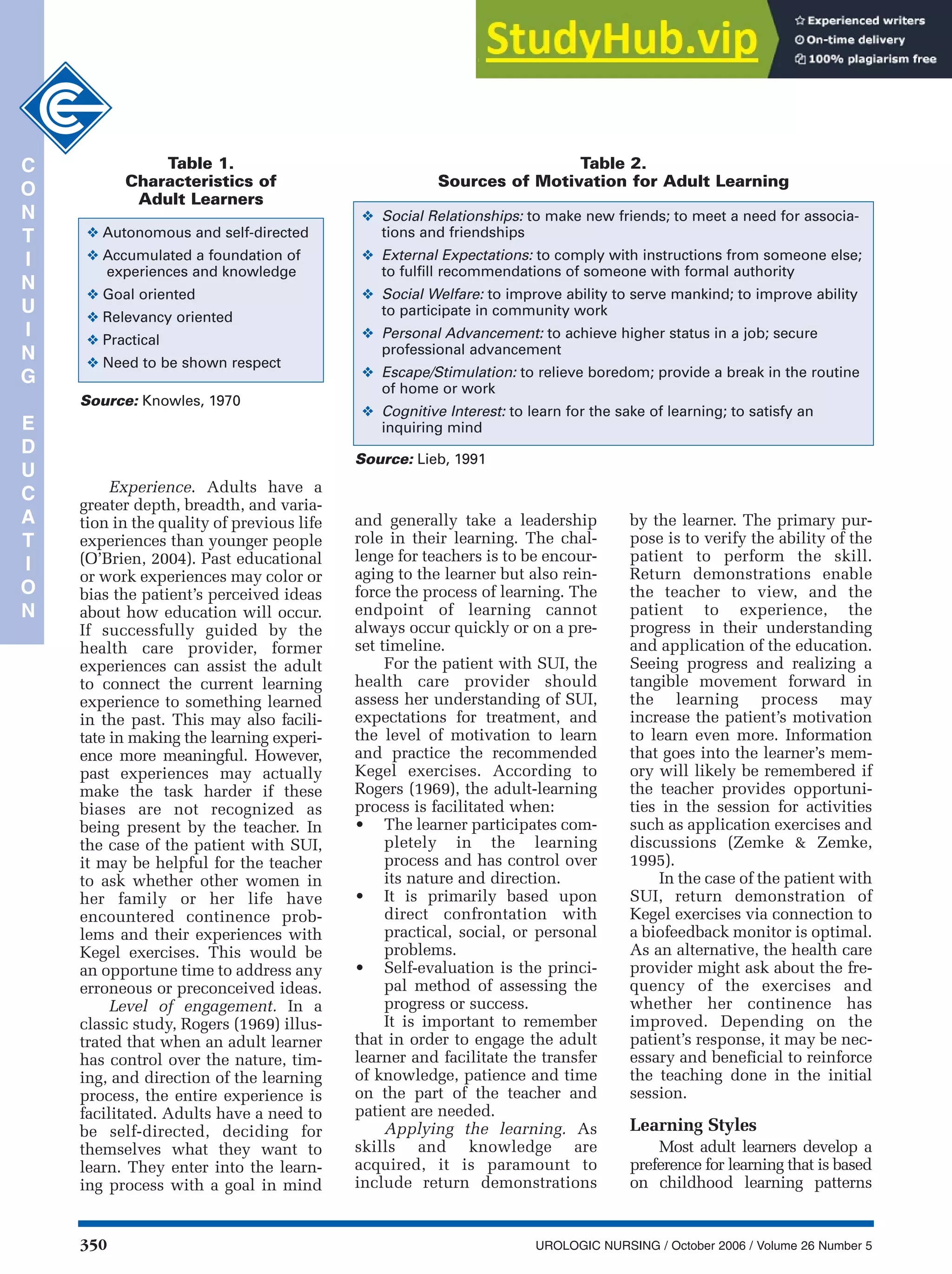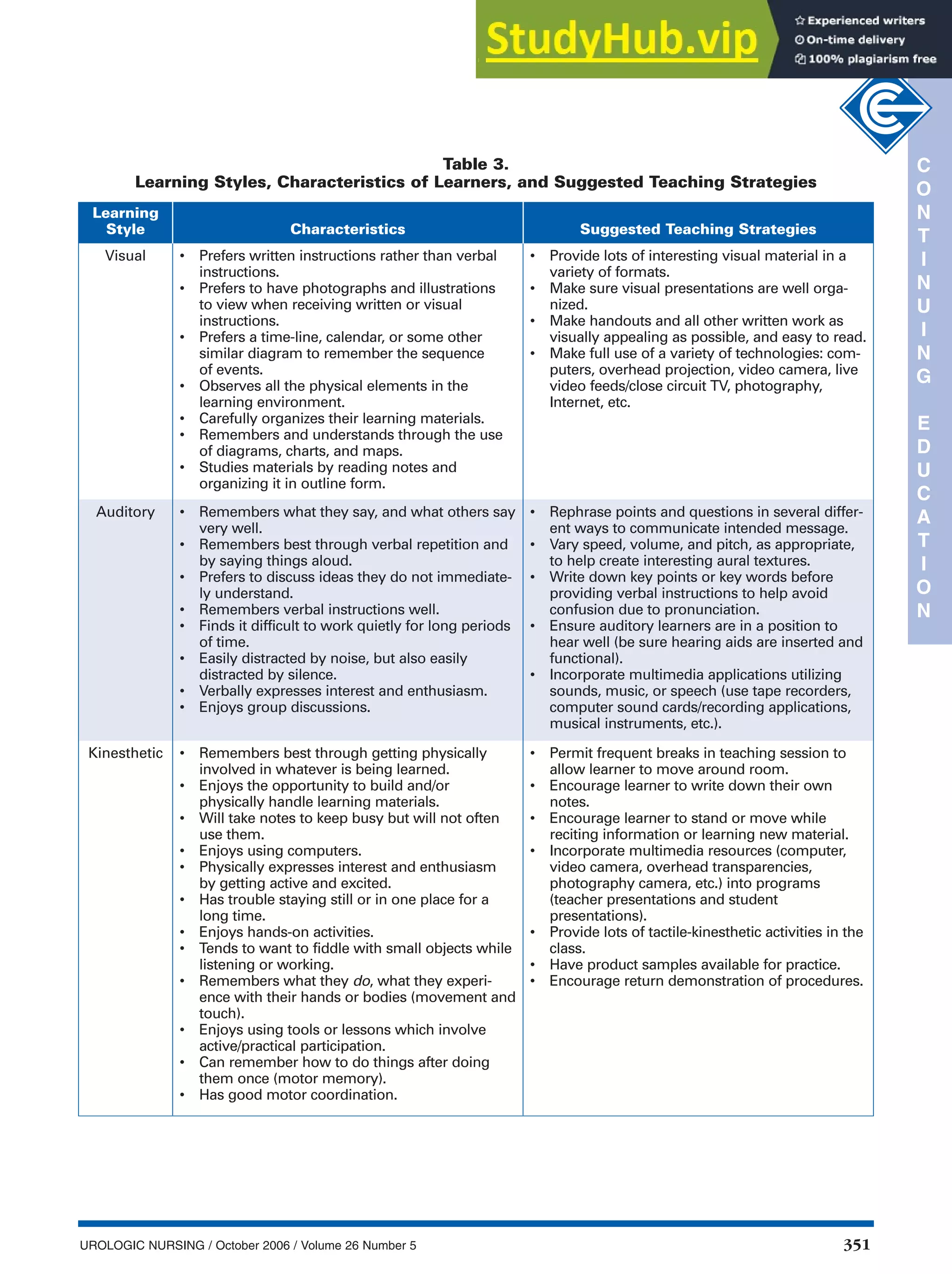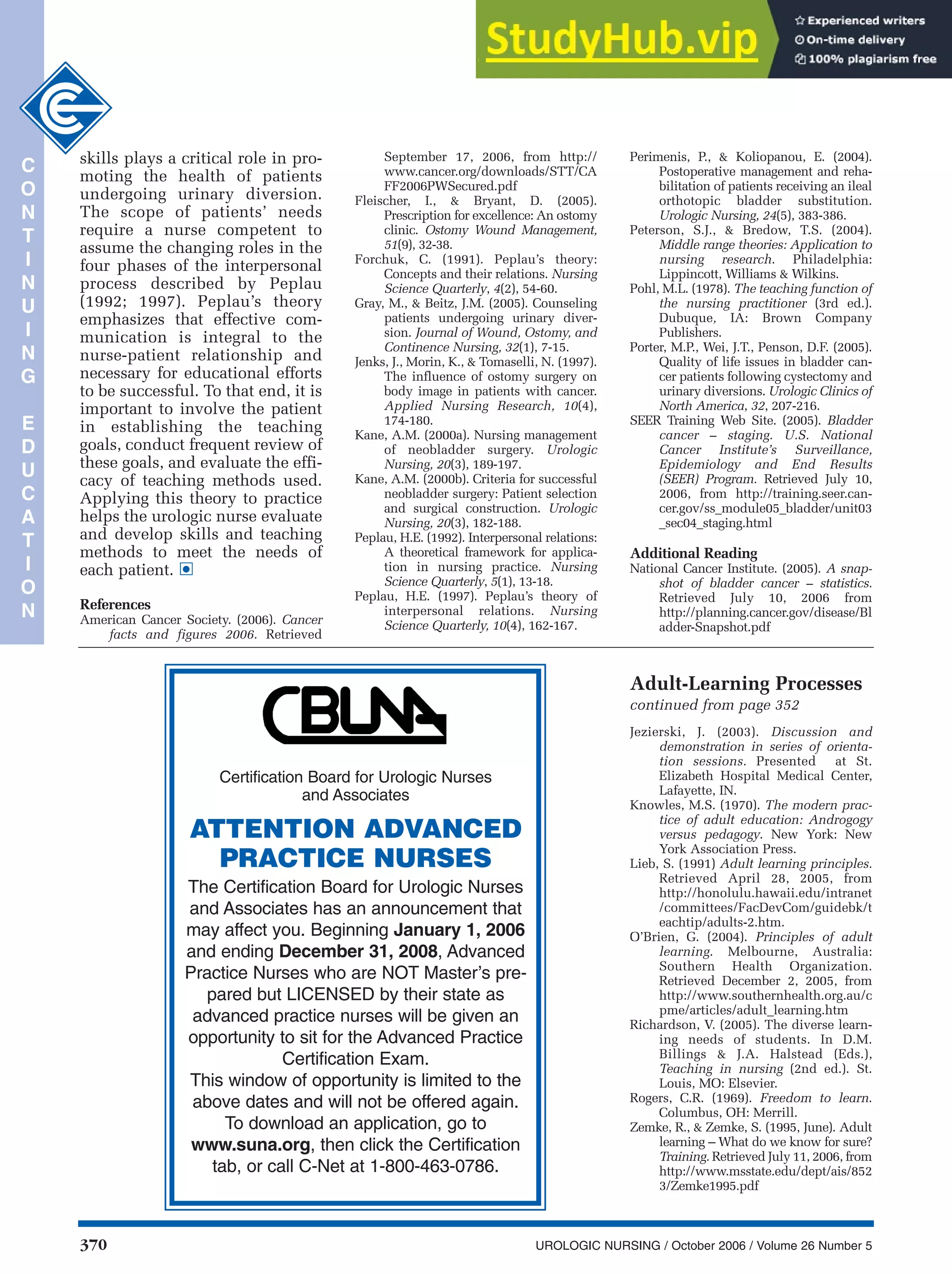This document discusses principles of adult learning and how health care providers can effectively educate adult patients. It covers the following key points:
- Theories of adult education are based on valuing prior learning and experience. Adult learners have different learning styles that must be assessed.
- Malcolm Knowles identified six characteristics of adult learners, including being self-directed, goal-oriented, and needing to see relevance.
- Motivation, experience, engagement, and applying learning are important factors. Learners are motivated by life experiences. Their prior experiences can help or hinder learning.
- Assessing learning styles, which are often visual, auditory, or kinesthetic, allows tailoring teaching





